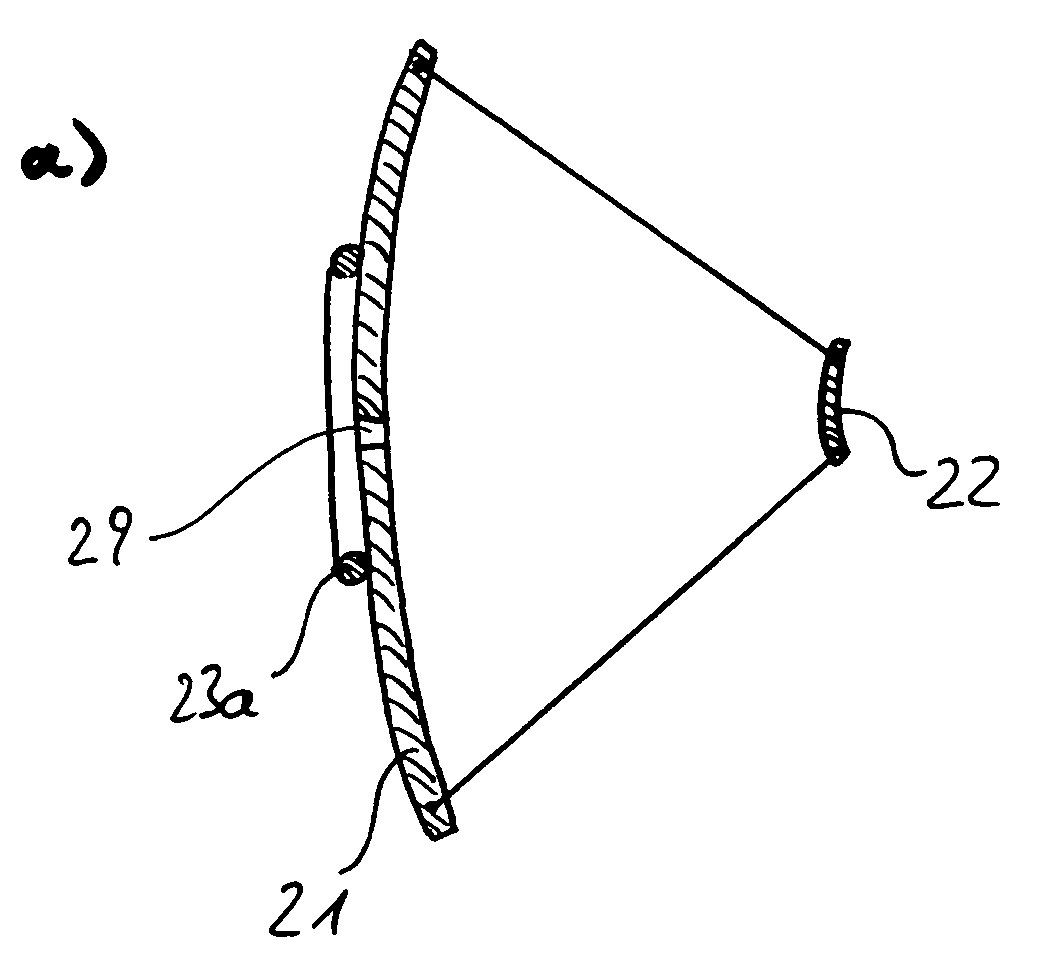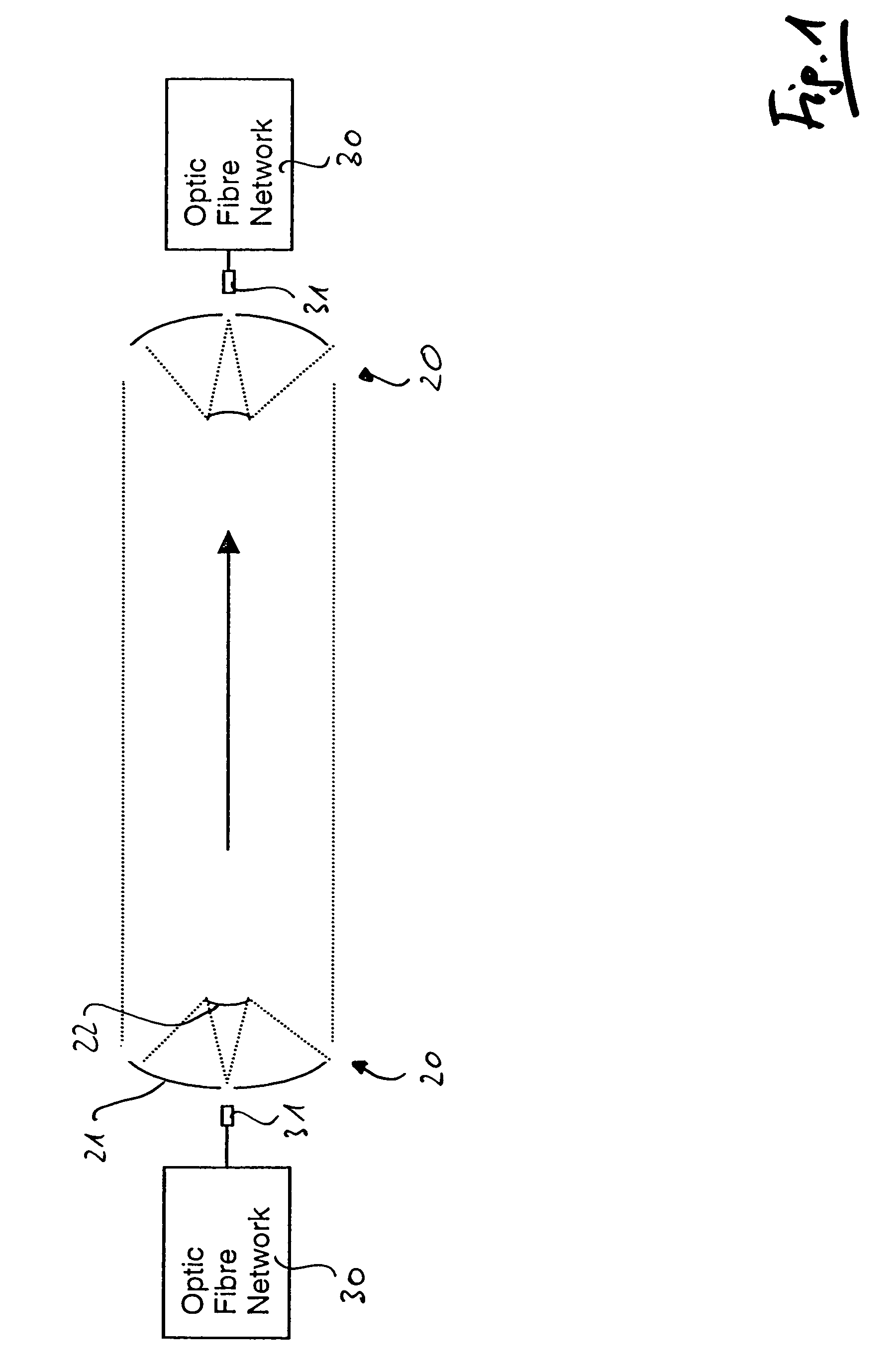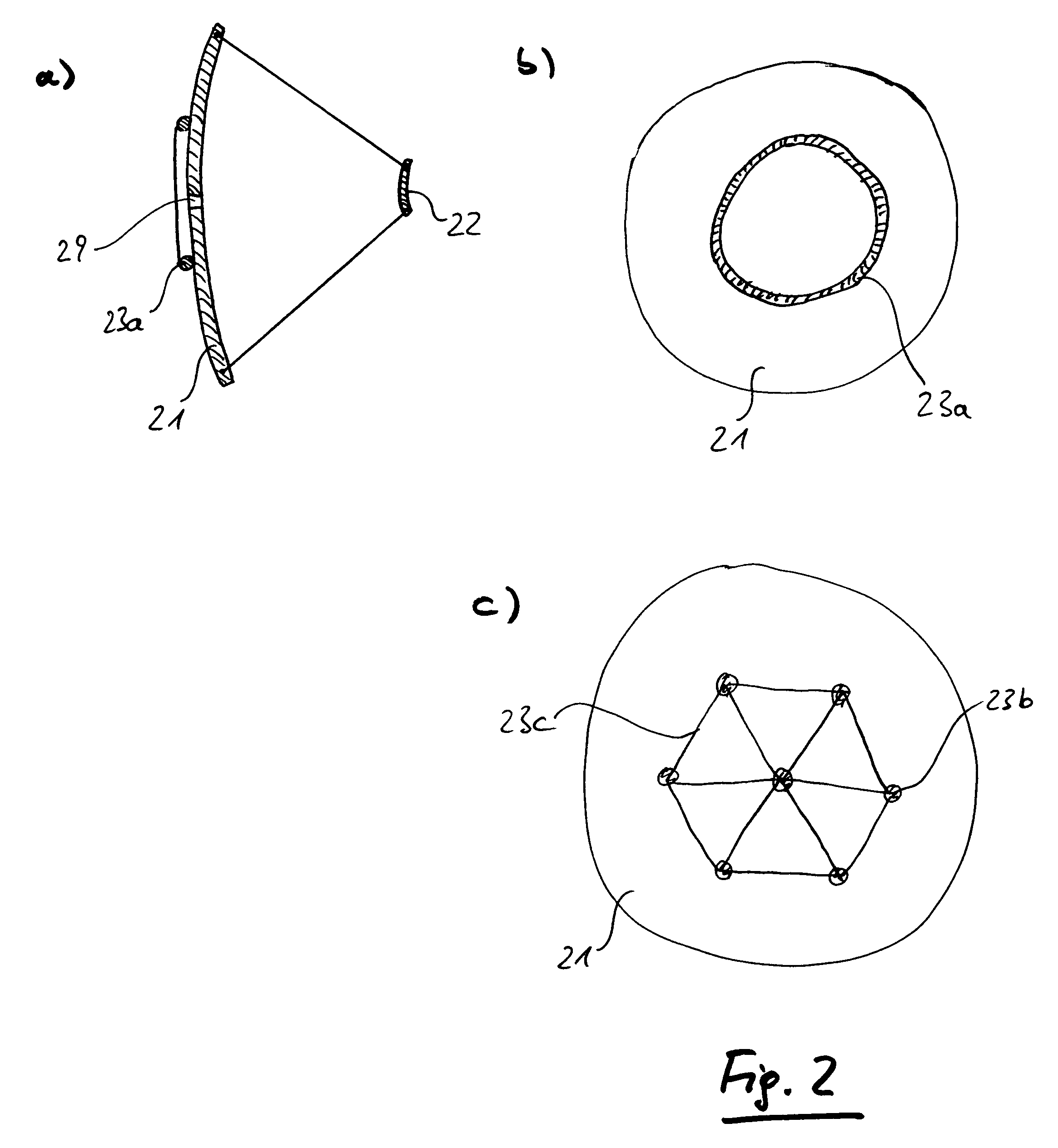Telescope mirror for high bandwidth free space optical data transmission
a manufacturing process and optical data transmission technology, applied in the direction of optical elements, mountings, instruments, etc., can solve the problems of high cost of precision manufacturing, and achieve the effects of high precision manufacturing, moderate cost, and high bandwidth free space optical communication
- Summary
- Abstract
- Description
- Claims
- Application Information
AI Technical Summary
Benefits of technology
Problems solved by technology
Method used
Image
Examples
Embodiment Construction
[0028]FIG. 1 is a schematical illustration of a free space optical communication link according to the present invention. A transmitter station (left side) and a receiving station (right side) each comprising an optical fibre network are connected by a free space communication link between transceivers 20 preferably using infrared light having a wavelength of about 1550 nm. The optical signal is coupled from the optical fibre network 30 through the optical fibre terminal 31 into the transceiver 20 comprising a primary mirror 21 and a secondary mirror 22. The optical signal is then transformed into a parallel light being having diameter of several ten centimeters. This large diameter is necessary in order to avoid potentially hazardous light intensities. The parallel light beam is then received by the receiving telescope 20 (in FIG. 1 on the right hand side). It is obvious that the transmission efficiency and so the maximum possible distance depends on an exactly parallel light beam....
PUM
| Property | Measurement | Unit |
|---|---|---|
| Temperature | aaaaa | aaaaa |
| Temperature | aaaaa | aaaaa |
| Temperature | aaaaa | aaaaa |
Abstract
Description
Claims
Application Information
 Login to View More
Login to View More - R&D
- Intellectual Property
- Life Sciences
- Materials
- Tech Scout
- Unparalleled Data Quality
- Higher Quality Content
- 60% Fewer Hallucinations
Browse by: Latest US Patents, China's latest patents, Technical Efficacy Thesaurus, Application Domain, Technology Topic, Popular Technical Reports.
© 2025 PatSnap. All rights reserved.Legal|Privacy policy|Modern Slavery Act Transparency Statement|Sitemap|About US| Contact US: help@patsnap.com



